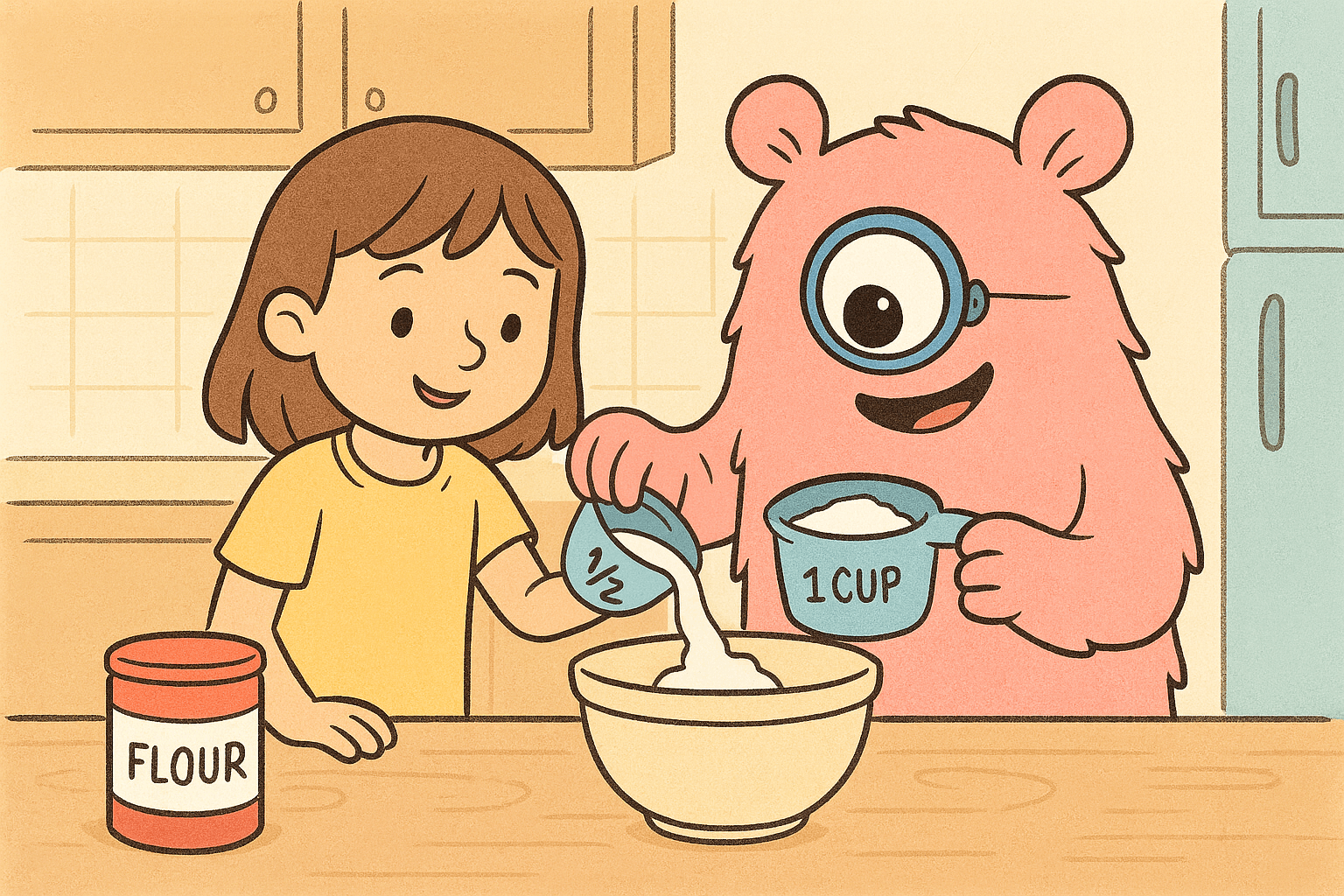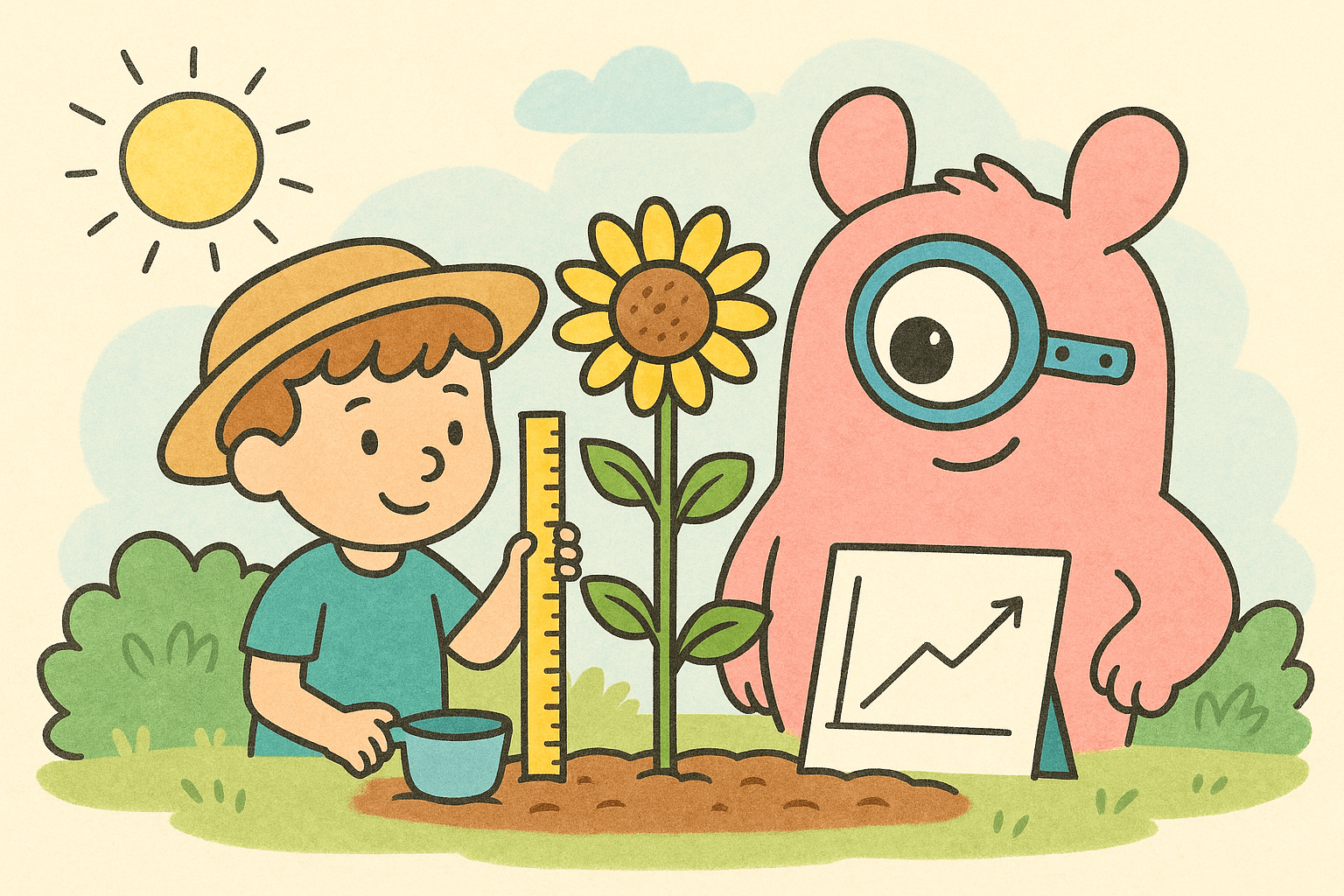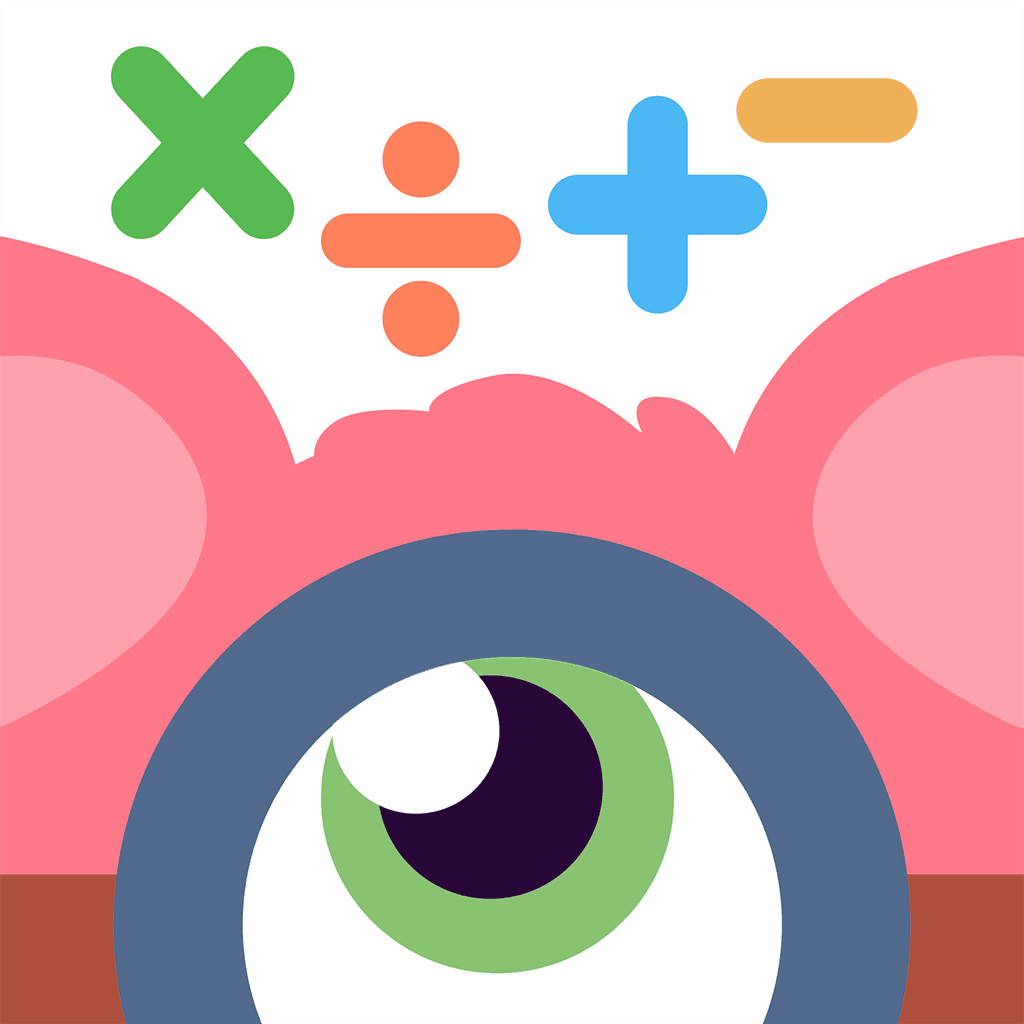6 Everyday Chores That Double as Math Lessons for Neurodiverse Kids
TL;DR
Transform daily chores into engaging math opportunities for elementary-aged neurodiverse children (with ADHD, autism, or dyscalculia). This research-backed guide highlights six chores that build skills like measurement, addition, and patterns naturally. Key benefits include improved executive functions and real-world application, supported by studies on home-based learning.
As parents or teachers of elementary school children in the US, supporting neurodiverse kids - those with ADHD, autism spectrum disorder (ASD), or dyscalculia - presents unique opportunities and challenges in math education. Everyday chores offer a low-pressure way to embed math practice into routines, fostering skills like number sense and problem-solving. Research indicates that the home math environment, including informal activities, significantly correlates with children's math development. Moreover, engagement in household chores predicts better executive functions, such as working memory, which are crucial for mathematical ability. This article explores six chores that double as math lessons, with adaptations for neurodiverse needs, all grounded in peer-reviewed evidence.
1. Cooking and Baking: Measuring Ingredients for Fraction Fun
Cooking and baking provide a sensory-rich environment where kids can explore measurements, fractions, and sequences without feeling like they're in a classroom. For instance, measuring ingredients requires understanding units like cups or teaspoons, which builds arithmetical skills. Students with mild intellectual disabilities can develop these through recipe-based activities, interpreting quantities and computing adjustments. Start with simple tasks, like doubling a recipe for cookies, which teaches multiplication and fractions - halving 1 cup of sugar becomes a practical lesson in division.

For children with ADHD, break recipes into short steps with visual timers to maintain focus. Autistic kids might benefit from predictable routines, using picture-based recipes to reduce anxiety while practicing sequencing. Those with dyscalculia can use concrete tools like measuring cups to visualize concepts. Extend this by discussing temperature (addition/subtraction) or timing (elapsed time), turning baking into a multi-domain math experience. Parents report that such hands-on activities boost confidence, as evidenced by studies on food-based math curricula. For more ideas, check our blog on math in the kitchen for real-life learning.
2. Grocery Shopping: Adding Up Costs and Estimating Totals
Grocery shopping turns abstract math into tangible decisions, helping kids practice addition, subtraction, estimation, and budgeting. Have your child compare prices per unit or calculate change, which reinforces operations. Such real-world tasks contribute to the home math environment and are linked to improved skills across domains.
Adapt for ADHD by setting a budget challenge - estimate totals to stay under $20 - which builds executive functions. For autism, focus on categorizing items (fruits vs. dairy) to teach classification while reducing sensory overload with quieter store times. Dyscalculia support comes from using calculators initially, transitioning to mental math. Discuss sales (percentages) or weights (measurement) to deepen learning. This chore also promotes social skills, like polite interactions at checkout. See our blog on money related activities for ADHD kids for tailored strategies.
3. Doing Laundry: Sorting and Counting Clothes
Laundry chores involve sorting by color, type, or size, introducing patterns, counting, and basic statistics. Count socks in pairs for even/odd concepts or sort loads by weight for measurement. Household chores like this enhance executive functions, including working memory tied to math performance. For elementary kids, start with small piles to avoid overwhelm.
For ADHD, incorporate movement - sort while standing - to leverage kinesthetic learning. Autistic children may enjoy the routine aspect, using color charts for patterns. Dyscalculia adaptations include tactile sorting (feel fabrics for categories). Discuss cycles (time subtraction) or detergent amounts (fractions) for added depth. This builds life skills alongside math.
4. Gardening: Planning Plots and Measuring Growth
Gardening engages geometry through plot design and measurement via seed spacing or growth tracking. Measure beds for area calculations or chart plant heights for data analysis. Garden-based activities foster math engagement in young learners.
Outdoor settings calm ADHD kids, providing sensory breaks while practicing estimation (e.g., seeds needed). For autism, predictable growth cycles aid sequencing. Dyscalculia benefits from visual graphs. Track yields for fractions (half harvested). This chore connects math to nature, boosting motivation.

5. Setting the Table: Counting Utensils and Arranging Shapes
Table setting reinforces counting (utensils per person) and spatial awareness (arrangements). Recognize shapes in plates or fold napkins for geometry. The home learning environment with routines like this relates to early math outcomes.
Adapt for ADHD with checklists, enhancing focus. Autistic kids thrive on consistency, using diagrams for positions. Dyscalculia support via one-to-one correspondence. Scale for guests to teach multiplication.
6. Organizing Toys or Rooms: Grouping and Sequencing Items
Organizing builds classification (group by type) and sequencing (order by size), foundational for algebra. Geometric toy play varies spatial language, supporting math cognition.
Even estimating whether toys will fit in a rack or a drawer can build a sense of geometry and 3d shapes/sizes. Planning a room layout in case of changing furniture orientation can again help them build their estimation and measurement skills ("Will this table fit in that corner?").
For ADHD, time-bound tasks aid regulation. Autism adaptations include visual labels for the different toys or items.
Conclusion: Integrating Chores for Lasting Math Gains
Incorporating these chores into daily life creates a supportive home-based intervention. Consistency yields improvements in confidence and skills. Track progress gently, celebrating small wins to motivate neurodiverse learners.
FAQ
How can I adapt these chores for a child with ADHD?
Children with ADHD often benefit from structured yet flexible approaches to maintain engagement. Use short bursts of activity (e.g., 5-10 minutes per chore segment), incorporate timers for a sense of urgency without pressure, and offer immediate rewards like stickers or extra playtime upon completion. Break down tasks into clear, sequential steps with visual aids like checklists or apps. This leverages the benefits of chores for executive functions, such as improving working memory and self-regulation, which are key for math learning. For example, in grocery shopping, let them scan items or push the cart to add movement, helping channel energy productively.
Are these activities suitable for kids with autism?
Absolutely, these chores can be highly suitable for children with autism when adapted to their preferences for routine and sensory needs. Emphasize predictability by creating visual schedules or step-by-step picture guides for each chore, which reduces anxiety and supports sequencing skills. Choose sensory-friendly versions, like using soft gloves for laundry sorting or quiet garden tools. Research on the home math environment shows that consistent, embedded activities like these can enhance math development without overwhelming stimuli. Start with chores that align with their interests, such as organizing toys if they enjoy categorization, to build confidence gradually.
What if my child has dyscalculia?
For kids with dyscalculia, who may struggle with number sense and basic operations, incorporate concrete manipulatives like counting beads or visual aids during chores to make abstract concepts tangible. Begin with low-stakes tasks, such as sorting laundry by pairs (introducing even numbers), and gradually increase complexity. Use tools like measuring tapes in gardening for hands-on measurement practice. This approach is consistent with home math practices that emphasize real-world application to build foundational skills. Patience is key - celebrate efforts over perfection, and pair with verbal explanations to reinforce understanding.
How do I track progress without pressure?
Track progress subtly by observing natural improvements, such as increased independence in completing chores or more frequent use of math language (e.g., "This needs half a cup"). Keep a simple journal noting positive changes weekly, without sharing it directly with your child to avoid stress. Quality home environments, as shown in research, correlate with better math outcomes, so focus on enjoyment rather than metrics. If needed, use apps for gentle tracking, but prioritize fun to maintain motivation.
Can teachers incorporate these into school?
Teachers can extend these ideas by suggesting them as homework extensions or simulating chores in the classroom, like a mock grocery store for budgeting lessons. This bridges home and school learning, reinforcing concepts through repetition. Drawing on home math environment research, collaborate with parents via newsletters sharing adaptations. In-class role-play can make it inclusive, helping neurodiverse students practice in a supportive group setting.
What if my child resists chores?
If resistance occurs, start with very small, achievable tasks and pair them with preferred activities - e.g., organize toys before playtime. Make it collaborative and fun by turning it into a game with timers or music. Gradually build tolerance, as consistent exposure can shift attitudes. Research on chore engagement highlights long-term cognitive benefits, so persistence with positive reinforcement pays off.
How often should we do these activities?
Aim to integrate these chores 3-5 times a week, depending on your family's schedule, to allow for natural repetition without burnout. Regular exposure helps solidify skills, as supported by studies on embedded learning. Adjust based on your child's energy levels—shorter sessions more frequently work better for some neurodiverse kids. Over time, this builds habits that make math feel like a seamless part of daily life.
References
- Hart, S. A., Ganley, C. M., & Purpura, D. J. (2016). Understanding the home math environment and its role in predicting parent report of children’s math skills. PLOS ONE, 11(12), e0168227. https://doi.org/10.1371/journal.pone.0168227
- Granberg, C., Brante, G., Olsson, V., & Mattsson Sydner, Y. (2017). Knowing how to use and understand recipes: What arithmetical understanding is needed when students with mild intellectual disabilities use recipes in practical cooking lessons in Home Economics? International Journal of Consumer Studies, 41(1), 94-102. doi:10.1111/ijcs.12317
- Bosire, J. P. O., Palermo, F., & Napoli, A. R. (2025). Early home literacy and math environment: Cross-domain associations between parental literacy and math beliefs. Frontiers in Psychology, 16, Article 1649713. doi:10.3389/fpsyg.2025.1649713
- Tepper, D. L., Howell, T. J., & Bennett, P. C. (2022). Executive functions and household chores: Does engagement in chores predict children's cognition? Australian Occupational Therapy Journal, 69(5), 585–598. https://doi.org/10.1111/1440-1630.12822
- Lucero, L. (2021). Growing young mathematicians: Engaging young learners with mathematics through designing and planting a garden. Journal of Mathematics Education, 13(2), 33-49. https://doi.org/10.26711/007577152790073
- Vanbecelaere, S., Matsuoka, K., Reynvoet, B., & Depaepe, F. (2021). The role of the home learning environment on early cognitive and non-cognitive outcomes in math and reading. Frontiers in Education, 6, Article 746296. https://doi.org/10.3389/feduc.2021.746296
- Verdine, B. N., Zimmermann, L., Foster, L., Marzouk, M. A., Golinkoff, R. M., Hirsh-Pasek, K., & Newcombe, N. (2018). Effects of geometric toy design on parent-child interactions and spatial language. Early Childhood Research Quarterly, 46, 126–141. doi:10.1016/j.ecresq.2018.03.015
- Roseno, A. T., Carraway-Stage, V. G., Hoerdeman, C., Díaz, S. R., Eugene, G., & Duffrin, M. W. (2015). Applying mathematical concepts with hands-on, food-based science curriculum. School Science and Mathematics, 115(1), 14–21. doi:10.1111/ssm.12097


Comments
Your comment has been submitted successfully!